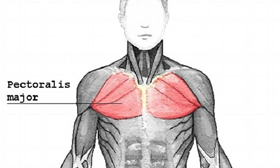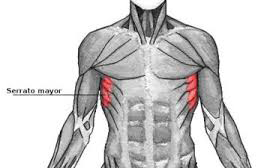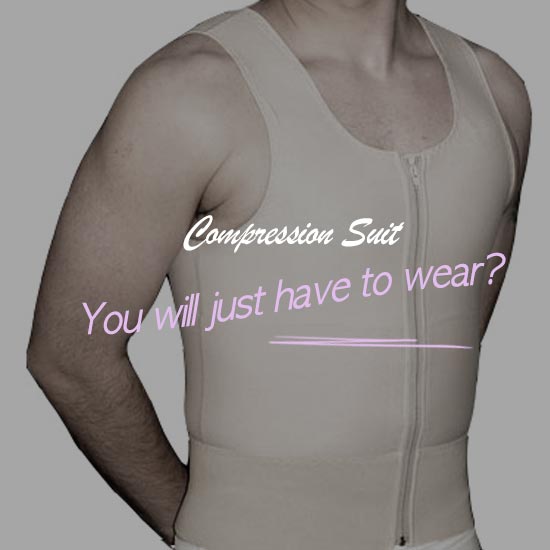When Can I Start Exercising After Gynecomastia Surgery?
Recovering from gynecomastia surgery requires patience and careful post-operative care. Swelling, bruising, and temporary skin irregularities are all part of the natural healing process. To ensure a smooth recovery, proper wound care, medication adherence, and compression garment usage are essential.
The compression vest plays a critical role in minimizing swelling, promoting skin retraction, and preventing fluid buildup. It should be worn 24 hours a day for the first two weeks, then at least 12 hours a day for another 2 to 4 weeks. However, in cases of grade 3 or higher requiring periareolar resection or Anchor incision, it is recommended to wear the compression garment 24 hours a day for at least one month to ensure optimal healing and minimize complications.
To maximize its effectiveness, make sure the compression garment stays flat and smooth against your skin—frequent adjustments may be needed to prevent it from folding or creasing, as this can create unwanted pressure points and affect healing. Proper adherence to compression garment use can significantly improve overall results.”
Key Guidelines for a Smooth Recovery
- Rest & Initial Care: A full day of rest within the first 24 hours is recommended. During this time, focus on hydration and easily digestible meals. If there is any fluid leakage, apply a new sterile gauze without removing the original dressing, as the wound must remain protected from contamination.
- Medication & Pain Management: Take prescribed medications three times a day after meals for seven days. Avoid aspirin or aspirin-containing products unless approved by your surgeon.
- Showering & Hygiene: You may take a shower 2–3 days after surgery, provided waterproof bandages are applied to the incision areas. However, hot baths, saunas, and swimming should be avoided for at least two weeks.
- Compression Garment – A Key to Faster Recovery: The compression vest plays a critical role in minimizing swelling, promoting skin retraction, and preventing fluid buildup. It should be worn 24 hours a day for the first two weeks, then at least 12 hours a day for another 2 to 4 weeks. Proper adherence to compression garment use can significantly improve overall results.
- Diet & Lifestyle Adjustments: You can resume a regular diet, but avoid alcohol and excessively salty foods, as they can exacerbate swelling.
- Healing Expectations: Some degree of asymmetry, lumpiness, and bruising is common during the healing phase—this is temporary and will improve over time.
- Positioning for Optimal Healing: Sleeping on your back, with your upper body slightly elevated, can help reduce swelling and minimize the risk of post-operative bleeding.
- Encouraging Movement: Light activities such as walking are highly encouraged to promote circulation and accelerate recovery. Gentle stretching, such as yoga, can also be beneficial in the early stages.
Warning Signs to Watch For: If you experience persistent pain, high fever, excessive itchiness, or yellowish discharge from the incision site within 3–4 days post-surgery, contact your surgeon immediately.
After 3 days
By the third day post-surgery, you can begin resuming light daily activities. Showering is now allowed, provided that waterproof bandages are applied to the incision areas. Most patients can return to sedentary jobs within a week after surgery, as long as they avoid strenuous movements.
For exercise, low-impact activities such as walking and light jogging are recommended. These help promote circulation and reduce the risk of complications without putting excessive strain on the healing tissues. Listen to your body and gradually ease into movement while avoiding any exercises that directly engage the chest muscles.
After 1 week
By the end of the first week, you can slowly return to normal daily activities, but exercise should still be avoided. If your job involves moderate physical labor, you may resume work with caution, ensuring that you avoid heavy lifting or any strenuous upper body movements that could put stress on the healing tissues.
While dedicated exercise is not yet recommended, light walking and gentle movements in daily life can help promote circulation and prevent stiffness. Listen to your body, and if you experience any discomfort or swelling, take additional rest and avoid excessive activity.
After 2 weeks
By the second week after surgery, you can start incorporating light stretching and gentle movements into your routine. Activities such as basic stretching, light yoga, and self-massage can help promote circulation and flexibility while preventing stiffness. However, heavy lifting or any chest-focused exercises involving resistance or weights should still be avoided to prevent unnecessary strain on the healing tissues.
If your job involves moderate physical labor, proceed with caution and avoid lifting heavy objects. Listen to your body, and if you experience discomfort or swelling, take additional rest and allow more time for recovery before progressing to more intense activities.
After 4 weeks
Once you have passed the four-week mark, you can gradually begin incorporating more intense exercises into your routine. Activities such as strength training, push-ups, swimming, and running can be introduced at this stage, but it’s essential to increase intensity slowly and avoid excessive strain on the chest area.
While the risk of bleeding or infection is significantly reduced at this point, overworking the chest muscles too soon can cause the surgical scars to widen or lead to hypertrophic scarring (thickened scars). To minimize this risk, it is highly recommended to use steri-strips or silicone scar sheets over the incision area while exercising.
Start with low resistance and controlled movements, gradually increasing the intensity based on your comfort level. Pay close attention to your body—if you notice any tightness, discomfort, or excessive pulling around the scar, scale back and allow more time for recovery. Proper warm-up, stretching, and scar protection are key to ensuring safe and effective healing while resuming exercise.
The Importance of Chest Exercises
To prevent sagging and maintain a firm chest contour, incorporating the right exercises is just as important as post-surgical massage. Strengthening key muscle groups will help support the skin and improve overall chest definition. However, since recovery progresses differently for each individual, it is highly recommended to consult with Evita’s staffs before starting any exercise routine to ensure a safe and effective recovery.
Key Muscles to Focus On
There are two major muscles that play a crucial role in chest structure and movement:
Pectoralis Major (Chest Muscle)

The pectoralis major is a thick, fan-shaped muscle that plays a crucial role in chest structure, arm movement, and upper body strength. Strengthening this muscle is particularly important after gynecomastia surgery, as it helps enhance chest firmness and definition, preventing sagging and improving overall shape. In cases of grade 3 or higher gynecomastia, where significant glandular tissue and fat removal can leave the skin looser, developing the pectoral muscles can help restore volume and support the skin, reducing the appearance of sagging and creating a more sculpted chest contour.
Additionally, many gynecomastia patients have underdeveloped pectoral muscles due to the presence of glandular tissue beneath the skin. This gland acts as a physical barrier, preventing proper muscle engagement and growth over time. As a result, the pectoralis major in these patients is often thinner and weaker compared to those without gynecomastia. After surgery, targeted strength training is essential to compensate for this lack of muscle development, helping to build a more structured and well-defined chest while improving overall posture and upper body aesthetics.
Serratus Anterior (Boxer’s Muscle)

The serratus anterior muscle is located along the sides of the chest, playing a crucial role in arm movement and shoulder stability. Often referred to as the “big swing muscle” or “boxer’s muscle,” it assists in scapular protraction, which is essential for pushing and punching motions.
Beyond its functional benefits, strengthening the serratus anterior helps prevent sagging under the armpits—a common concern after gynecomastia surgery. Additionally, for patients who have undergone glandular tissue removal, this muscle plays a key role in improving chest contour by reducing the sunken appearance that can sometimes occur post-surgery. Developing this muscle helps create a smoother, more natural chest shape while enhancing overall upper body function.
This video demonstrates a simple yet effective pectoral workout that takes just 8 minutes to complete.
The best part? You can do it at home, with no special equipment required! Incorporate this routine into your recovery plan to help strengthen your chest muscles and improve overall definition.
The serratus anterior is often considered one of the most aesthetically striking muscles in the male physique.
When well-developed and defined, this muscle group along the side of the rib cage creates a sharp, sculpted look—often resembling shark gills. Strengthening the serratus anterior not only enhances chest and shoulder stability but also adds to an athletic, chiseled appearance.
The above video provides an effective home workout routine specifically designed to strengthen your chest muscles
In the second video, each muscle exercise is clearly explained, helping you understand how your muscles move and how these exercises contribute to their development. Follow along to ensure proper form and maximize your results!
After Gynecomastia Surgery,
Filling the space left by fat and gland removal with muscle is essential for achieving a well-defined chest.
And yes—you CAN do it! Stay consistent, stay strong, and build the chest you want!

